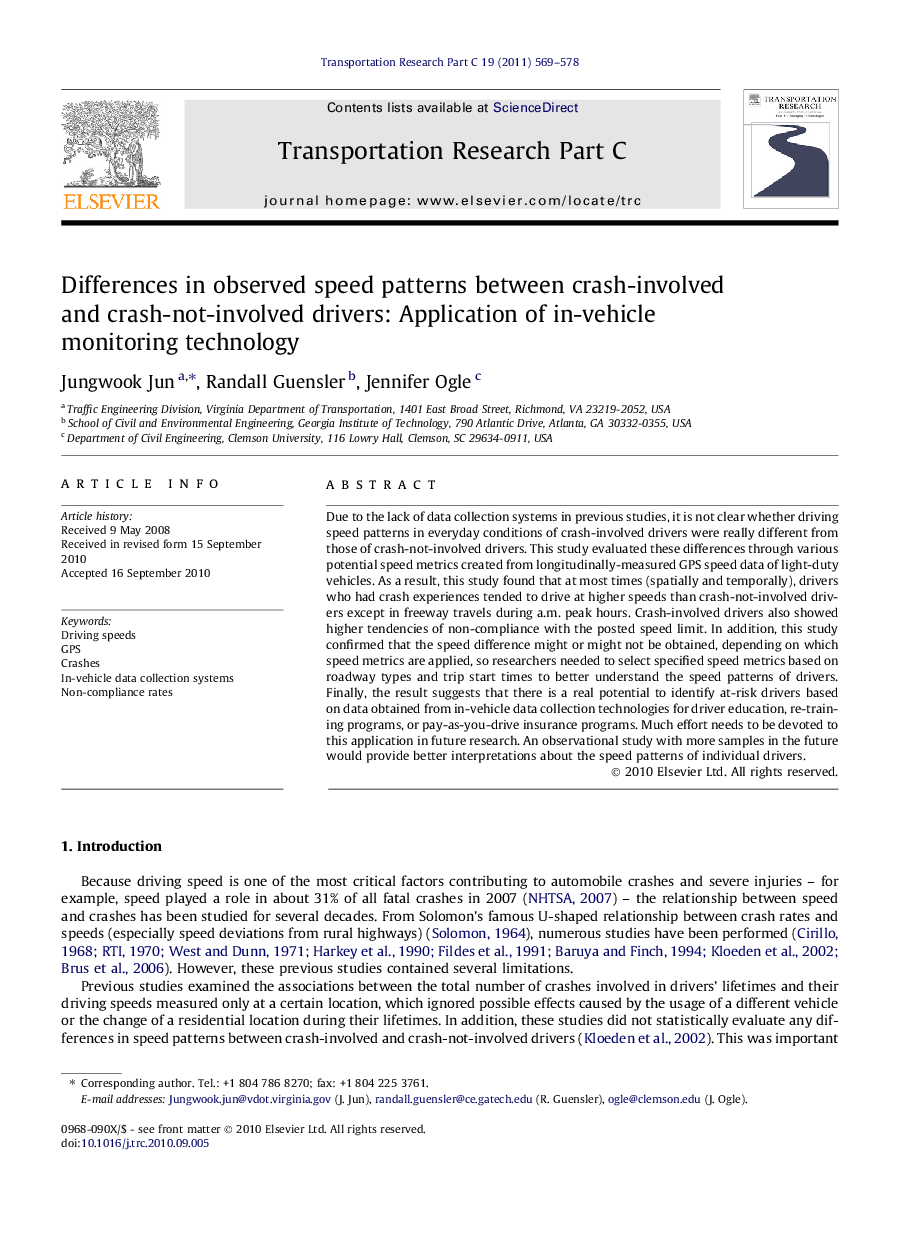| Article ID | Journal | Published Year | Pages | File Type |
|---|---|---|---|---|
| 526611 | Transportation Research Part C: Emerging Technologies | 2011 | 10 Pages |
Due to the lack of data collection systems in previous studies, it is not clear whether driving speed patterns in everyday conditions of crash-involved drivers were really different from those of crash-not-involved drivers. This study evaluated these differences through various potential speed metrics created from longitudinally-measured GPS speed data of light-duty vehicles. As a result, this study found that at most times (spatially and temporally), drivers who had crash experiences tended to drive at higher speeds than crash-not-involved drivers except in freeway travels during a.m. peak hours. Crash-involved drivers also showed higher tendencies of non-compliance with the posted speed limit. In addition, this study confirmed that the speed difference might or might not be obtained, depending on which speed metrics are applied, so researchers needed to select specified speed metrics based on roadway types and trip start times to better understand the speed patterns of drivers. Finally, the result suggests that there is a real potential to identify at-risk drivers based on data obtained from in-vehicle data collection technologies for driver education, re-training programs, or pay-as-you-drive insurance programs. Much effort needs to be devoted to this application in future research. An observational study with more samples in the future would provide better interpretations about the speed patterns of individual drivers.
Research highlights► Driving speed patterns in everyday conditions of crash-involved and crash-not-involved drivers were evaluated. ► The result suggests that there is real potential to identify at-risk drivers based on data obtained from in-vehicle data collection technologies. ► Depending on roadway types and trip start times, there were different chances of each speed metric (either measure of amount or measure of frequency) being selected. ► The advanced in-vehicle data collection systems presented in this study would provide many beneficial opportunities to collect a variety of driving activity data of individual drivers and would guide future research in a proper manner. ► In future, an observational study with more samples would provide better interpretations about speed patterns of individual drivers.
